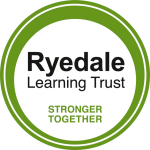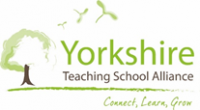The Year 7 curriculum will allow you to explore the following areas of music:
Performance
- How to play the keyboard
- Those that have instrumental and singing lessons, how to prepare for public performance
- Considering carefully instructions in a musical score, such as dynamics and articulation
- How to cope with nerves when performing in class/public
- How to join in with whole-class singing activities to make an individual contribution that matters
- How to offer supportive critical feedback to improve the quality of someone else’s performance
Composition
- How to use the basic elements of Sibelius software
- The importance of musical structure in composition
- Other key fundamentals, such as use of a key note (tonic) to write a melody and phrase shape
- How to add accompaniments to melodies
- Considering score details such as dynamics and articulation
- How to offer supportive critical feedback to improve the quality of someone else’s composition
Listening and Appraising
- Learning how to read basic and more advanced rhythms
- Learning how to read basic treble clef pitch, and explore other clefs such as the bass and alto/tenor
- Learning how to express an opinion about a piece of music we listen to, and respect the opinion of others
- Learning the fundamental elements of music in addition to pitch and rhythm – structure, melody, harmony, texture
- Listen to a range of musical styles and understand how they link to the specific topic we are studying
- Listen to and recognise the sound of main voice types, both male and female
- Learn how to attempt rhythmic and melodic dictation
Topics in the Year 7 Curriculum
- African Drumming Composition – students will learn how to create a short drumming piece based on West African Drumming techniques, written using SIbelius notation software. They will explore the skills required to play the djembe, compose using structures and develop collaborative skills
- Developing aural skills – students will begin to develop the necessary aural skills to become a successful musician. This includes being able to identify a simple pulse, imitating rhythms, imitating melodies and identifying key musical elements in a variety of pieces. This topic is likely to start in the Autumn term and be completed at the start of the Spring term
- Voices and Instruments– students will learn about the different combinations of instruments focusing on the orchestra. They will also look at different voice types. They will gain an understanding of the sound and appearance of a range of instruments and voices and how they work together to create larger ensembles. This topic will take place at the start of the Spring term
- Performance Practice – students will begin to develop the necessary music reading skills to become a successful musician. This will be done by the students learning a simple piece of keyboard music in the treble clef and with simple rhythm values and they will all perform to their peers in class during the Spring term. Those students who already play an instrument will be given the opportunity to practice time on their own instrument and will therefore need to bring these and their music. These students will be given the opportunity to perform in the recital evening in late February
The work of every topic is supported by a range of listening activities. Students keep a record of listening work in their workbooks. This also includes continued work on basic musical literacy and the development of the recognition of different instruments and voice types, and other musical features.
Assessment:
- Summative assessments: each topic has one practical assessment (either performance or composition) and a listening test. A record of these assessments is kept by the student in the back of their workbook
- Ongoing low-level checking of listening work, sometimes verbal, sometimes in back of work book. Aural skills will be assessed in line with ABRSM mark schemes for this part of practical examinations
Feedback
- One summative assessment per term will receive written feedback
- Use of apps such as Quizlet and Plickers form part of a regular diet of formative feedback, as well as frequent teacher-peer and peer-peer feedback of all aspects of performing and composing work. This is usually verbal, or available in Sibelius software
Homework
- Formal homework is not set at KS 3 in music
- Students undertaking private music lessons should always consider the amount of personal practice they do and staff will always support and encourage this
- Taking part in an extra-curricular musical activity is a good way of broadening your general musical knowledge and improving your confidence as a performing musician
There is such a rich range of good online resources, and there are many more than this short list, but these are good starting points:
- www.abrsm.org – help with music theory, how to practice, how to prepare for exams.
- www.musictheory.net – really good basic theory lessons and tests
- www.classicfm.com – great way into classical music
- www.philharmonia.co.uk – practice recognising orchestral instruments
- www.bbc.co.uk/gcsebitesizemusic – learn more about different voice types
- Listening to a wide range of music broadens musical horizons
There are five YouTube playlists below, each one supporting the five Year 7 topics. [Some playlists are under construction – patience needed please!] [Please note some/all of the videos may contain third-party adverts for which Ryedale School cannot accept responsibility for.]
Performance and Music Reading (Pitch) Topic
This playlist contains some tips on learning to read music, where to put your hands on the keyboard, and some iconic pieces and performers from the classical music world.
Mozart Piano Concerto no. 21 in C, Elvira Madigan
Beethoven ‘Moonlight’ Sonata in C# minor
Here is your workbook. The contents include:
- Lower School Knowledge Organiser – this covers much of the fundamentals of musical theory which will support our learning.
- Materials to support practical and theoretical work completed in class – want to look at the music we’re playing, or see the theory work we’re doing in the topic? It’s here.
- Assessment grids for performance and composition – at Key Stage 3, performance and composition work is marked using a grid system, based on EDEXCEL GCSE music assessment grids. This ensures that students who take GCSE music have some familiarity with the assessment scheme. The assessment criteria are laid out clearly in bold at the top of each grid and then staff assess each student’s work individually against these criteria.
- Examples of listening tests – each topic concludes with a listening test. They include instrument and voice recognition, testing knowledge and understanding specific to the topic, and a mixture of melodic and rhythmic dictation.
Vocal Styles
Here are some widely varied vocal styles to enjoy and use as inspiration for your own compositions. Think – does ‘vocal styles’ necessarily mean singing?
Are you ‘up’ for the keyboard challenge?
Your challenge is to try and learn to play as much of a keyboard piece in one lesson as you possibly can. Push yourself hard and see how you get on.
How to take the challenge
- Pick one of the pieces below: easy, medium, difficult, which suits the level that you are working at. You have to log onto SharePoint to open the file. Click ‘ok’ or ‘accept’ to any pop-ups that appear when you open the pdf.
- Listen to the audio file of the piece you’ve picked. This will give you an idea of what it sounds like. You will need headphones in the PC to hear this.
- Try to practice the piece. You will need headphones in the back of the keyboard for this. Start with the right hand, and try and play the tune. When reading the letters and finding where you hand goes on the keyboard, remember if you move right on the keyboard, you are going higher in pitch. If you move left on the keyboard, you are going lower in pitch.
- If you are stuck, ask a neighbour for help. Between you, you should be able to work out what you are doing. Listen again to the audio file to remind yourself of what it sounds like.
- Once you can play a line, add the left hand. Try the left hand on its own. The left hand notes need holding down for longer than the right hand. Then try hands together.
- Get a neighbour to listen to what you are doing, and try and spot any mistakes. They can help you try and put your performance right.
- If you finish the piece you are playing, then try another one! Enjoy!
Music – headphones in keyboard
- Beginner piece – Bedford Square Blues
- Medium piece – Swing Low, Sweet Chariot
- Difficult piece – James Bond Theme
Audio – headphones in PC
- Beginner piece – Bedford Square Blues
- Medium piece – Swing Low, Sweet Chariot
- Difficult piece – James Bond Theme
Good luck!
Below is the knowledge organiser and information about the Year 7 exam paper for revision. Use it wisely!




















 Ryedale School is a partner in and co-ordinator for the Yorkshire Teaching School Alliance.
Ryedale School is a partner in and co-ordinator for the Yorkshire Teaching School Alliance.